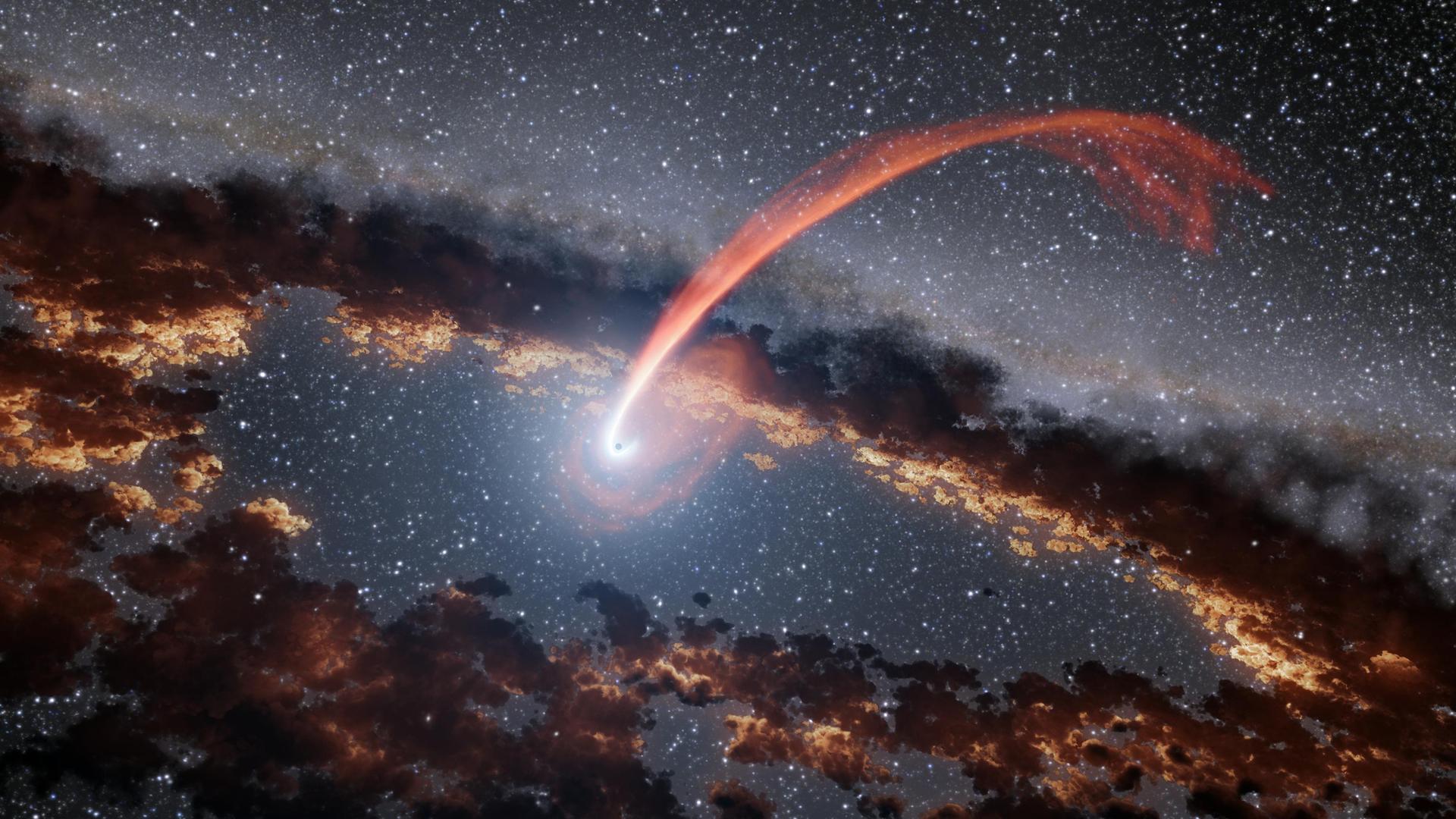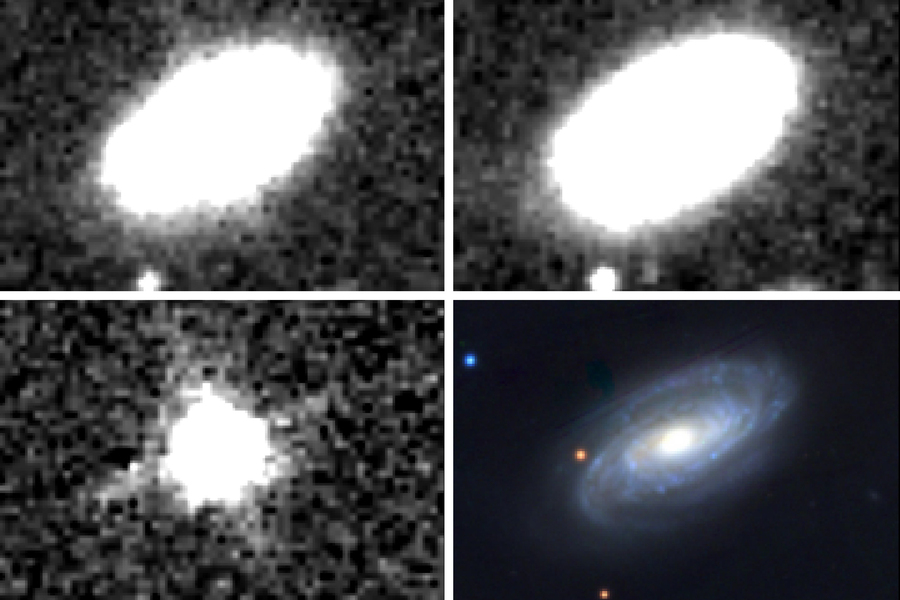
A long time ago, in a galaxy not so far away, a supermassive black hole ripped a star to shreds in the center of the galaxy NGC 7392. The flash of light from the black hole's dinner finally reached Earth in 2014 — and astronomers just discovered it in their data.
This newly detected outburst from the center of NGC 7392 is the closest-yet example of a tidal disruption event (TDE), where a star is pulled apart by the massive gravitational pull of a black hole. The findings were published April 28 in The Astrophysical Journal Letters.
The hungry black hole was spotted roughly 137 million light-years from Earth — or about 35 million times as far as Proxima Centauri, the closest star to the sun. As distant as that sounds, astronomers have only observed around 100 of these events so far, and this one is four times closer than the previous title-holder of "closest TDE to Earth." Scientists discovered the TDE in infrared, a different wavelength than most conventional TDE detections, which usually come in X-rays, ultraviolet, and optical light.
Related: Meet 'Scary Barbie,' a black hole slaughtering a star in the brightest way possible
"Finding this nearby TDE means that, statistically, there must be a large population of these events that traditional methods were blind to," said lead author Christos Panagiotou, an astronomer at the Massachusetts Institute of Technology, in a statement. "So, we should try to find these in infrared if we want a complete picture of black holes and their host galaxies."

After first spotting the TDE in observations from the NEOWISE space telescope, Panagiotou and collaborators sifted through data from many other observatories and space telescopes to dig up more information on NGC 7392's supermassive black hole. They wanted to solve the mystery of why this TDE only appeared in infrared, instead of in more energetic wavelengths like others of its kind.
Previously discovered TDEs mostly appeared in so-called green galaxies, which don’t create quite as many stars as the more active blue galaxies but aren't totally burned-out on star-making like red galaxies. NGC 7392, however, is a blue galaxy — churning out many new stars and creating a lot of dust in the process. This dust could obscure the center of the galaxy, where the supermassive black hole lives, in optical and ultraviolet light. But infrared light enables astronomers to peer through that dust and see what's going on.
This finding suggests that astronomers should be searching for TDEs in infrared light, too.
"Using infrared surveys to catch the dust echo of obscured TDEs has already shown us that there is a population of TDEs in dusty, star-forming galaxies that we have been missing," Suvi Gezari, an astronomer at the Space Telescope Science Institute who was not involved in the study, said in the statement.
By looking for TDEs in infrared too, scientists could get one step closer to understanding how black holes chow down on stars.







